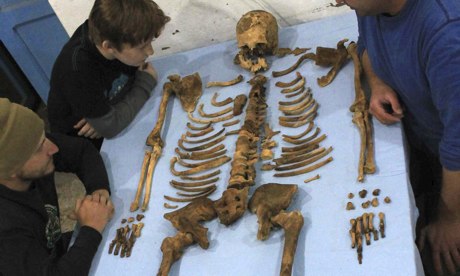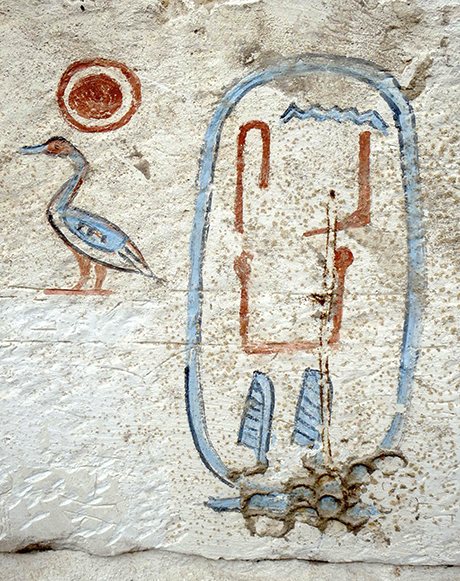Archaeologists find remains of previously unknown pharaoh in Egypt
Discovery of 3,600-year-old body of King Woseribre Senebkay confirms existence of dynasty
Patrick Kingsley in Cairo
The Guardian Wednesday 22 January 2014 12.25 GMT

The skeleton of the pharaoh King Woseribre Senebkay, whose mummified casing appeared to have been ripped apart by ancient looters. Click for full picture. Photograph: Egyptian ministry of antiquities
The 3,600-year-old remains of a previously unknown pharaoh have been discovered in southern Egypt, the country's antiquities ministry has announced.
The discovery of King Woseribre Senebkay is the first firm evidence of a forgotten pharaonic dynasty whose existence archaeologists had suspected but never proved.
Senebkay's tomb appeared to have been sacked by ancient looters, with his mummified casing ripped apart, and some of the tomb's decorations removed. But archaeologists from the University of Pennysylvania were able to piece his skeleton back together earlier this month, before deciphering his name from a section of hieroglyphics written inside the tomb. Further analysis revealed Senebkay was tall for his time at 1.75 metres (5ft 8in), and died at some point in his late 40s.
It was the first time the team had heard of the pharaoh, according to Josef Wegner, the dig's lead archaeologist.
"We were pretty puzzled for two days," Wegner told the Daily Pennsylvanian.
"It was a king's name that didn't appear anywhere else in history, so we didn't know who he was at first."

Hieroglyphics in the tomb showing Senebkay's name. Photograph: Photograph: Egyptian ministry of antiquities
Archaeologists say Senebkay's discovery confirms for the first time the existence of a third dynasty of pharaohs that ruled a central area between Egypt's northern and southern kingdoms at around 1,600BC. The two latter kingdoms were reunited in the century that followed – but the presence of a third dynasty suggests that their amalgamation may have been more complex than initially thought.
The Danish archaeologist Kim Ryholt first theorised about the lost dynasty's existence in 1997, but until now no physical evidence had been found.
The small size of Senebkay's tomb may indicate his dynasty's lack of financial clout, Wegner said in a statement released through the antiquities ministry. Some of the tomb's contents may have been recycled from earlier tombs. Its modest size may have also led the legendary Egyptologist Flinders Petrie to forgo its excavation as long ago as 1902, thinking it was unimportant.
